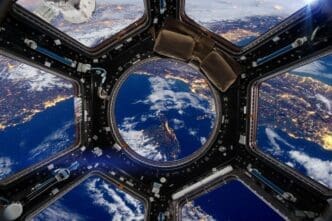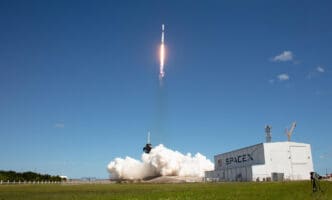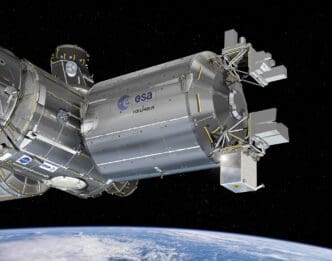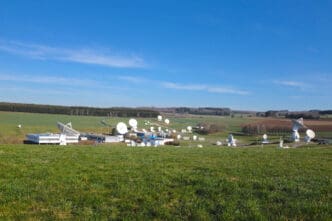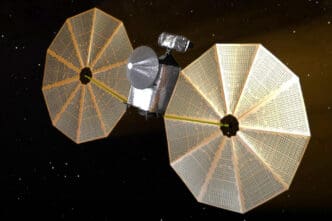Ready for some cosmic news? NASA, stepping in for NOAA, has signed a major deal with BAE Systems to kickstart a new spacecraft project. This isn’t just any project, as it’s part of the ambitious Space Weather Next program. With this venture, we are talking about a spaceship to be built for the Lagrange 1 Series.
Now, what does this mean for us earthlings? Well, the project’s total budget is a whopping $230.6 million, set to run from February 2025 to February 2035. Crafting these science wonders will take place at BAE’s Boulder, Colorado facility. It’s not just building spacecraft; it encompasses everything from spacecraft creation, integrating cool instruments, and running some hardcore tests. Let’s not forget training the flying team and supporting the mission once in orbit.
Rapid Spacecraft Acquisition IV Contract
This deal is part of a speedy agreement known as the Rapid Spacecraft Acquisition IV contract. This isn’t just your average contract, as it’s a savvy way for the government to grab spacecraft, components, and services quickly. NASA’s got a clever strategy that allows it to support its missions and help other federal bodies by swiftly securing the hardware they need.
In a nutshell, these contracts are the tie binding federal space missions together, ensuring all are on track without unnecessary delays. This strategic move aids NASA’s mission to explore the cosmos efficiently and effectively, without any hiccups that could slow down progress.
The Lagrange 1 Series Launch Plans
The first launch under the Space Weather Next Lagrange 1 Series is scheduled for 2029. This upcoming event marks the debut of the program’s observatory, which promises to keep watch over our cosmic neighborhood.
The satellite is not just floating around aimlessly; it will continue NOAA’s crucial space weather work, delivering real-time coronal images and solar wind data to keep us all informed. That’s vital for many industries relying on accurate space weather forecasting to avoid disruptions.
Why Space Weather Matters
Space weather might sound like a scene from a science fiction movie, but it’s real, and its effects on Earth are nothing short of dramatic.
It influences our everyday life, impacting everything from satellite communications to electrical grids. With accurate space weather predictions, we can bolster our defenses against these cosmic challenges, keeping society running smoothly.
The Lagrange 1 Series spacecraft will provide essential data to NOAA’s Space Weather Prediction Center. This data is crucial for developing forecasts, warnings, and alerts that help counteract cosmic disruptions.
NOAA’s Role in the Project
NOAA is the leading force driving this project, setting its requirements and providing funding. They oversee the program’s operations, manage the data products, and disseminate this information to end-users.
While NOAA takes the lead, NASA steps in with its commercial partners to develop and launch the necessary instruments and spacecraft. It’s a collaborative powerhouse effort, ensuring all aspects of the Lagrange 1 Series project run smoothly and effectively.
Key Players and Responsibilities
NASA and BAE Systems have teamed up to tackle all phases of the Lagrange 1 Series project. This includes everything from the initial concept to mission operations and support once the satellites are up in the sky.
BAE Systems’ Colorado facility will see the lion’s share of activity, creating the spacecraft and conducting rigorous tests. Meanwhile, NASA oversees these efforts, ensuring that the collaborative endeavor maintains the highest standards.
Technological and Logistical Highlights
This venture isn’t just about putting another satellite into orbit; it’s about advancing technological boundaries. The instruments aboard these spacecraft are cutting-edge, designed to capture vital cosmic data.
The logistical side is just as impressive, with extensive planning going into ensuring each phase of the project runs smoothly. Every launch and operation is carefully choreographed to avoid any potential setbacks.
The collaboration brings together years of specialized experience, promising successful missions that will expand our understanding of space weather.
Future Implications for Space Weather Observations
Once operational, these spacecraft will secure a continuous stream of space weather data, a significant boon for forecasters and industries relying on this information.
The satellites’ performance will set new standards for future space weather missions, paving the way for increasingly advanced technical solutions.
Balancing Risks and Opportunities
Although risks are inherent in any space mission, the potential benefits of the Lagrange 1 Series project make it worthwhile. It’s a delicate balance between mission safety and the necessity of pushing boundaries to gain fresh insights.
The project’s comprehensive approach aims to minimize risks while maximizing data collection benefits, ensuring future space endeavors are built on solid foundations.
A Look Towards the Horizon
As we look ahead, this project stands as a testament to the remarkable advancements in space exploration. The Lagrange 1 Series project promises to deepen our understanding of the dynamic space weather landscape.
Such projects are vital stepping stones towards future missions that might one day see humanity fully traversing the solar winds.
In essence, NASA and NOAA’s recent venture is an exciting progression in space observation. BAE Systems, with its technological prowess, is primed to deliver crucial insights into the cosmic weather surrounding us, promising to enhance our understanding and preparedness for the challenges ahead.

